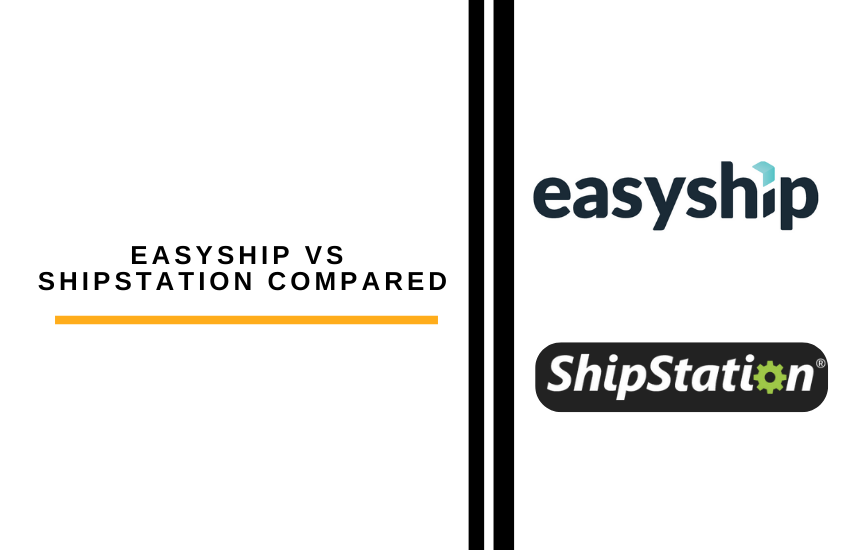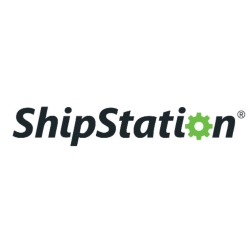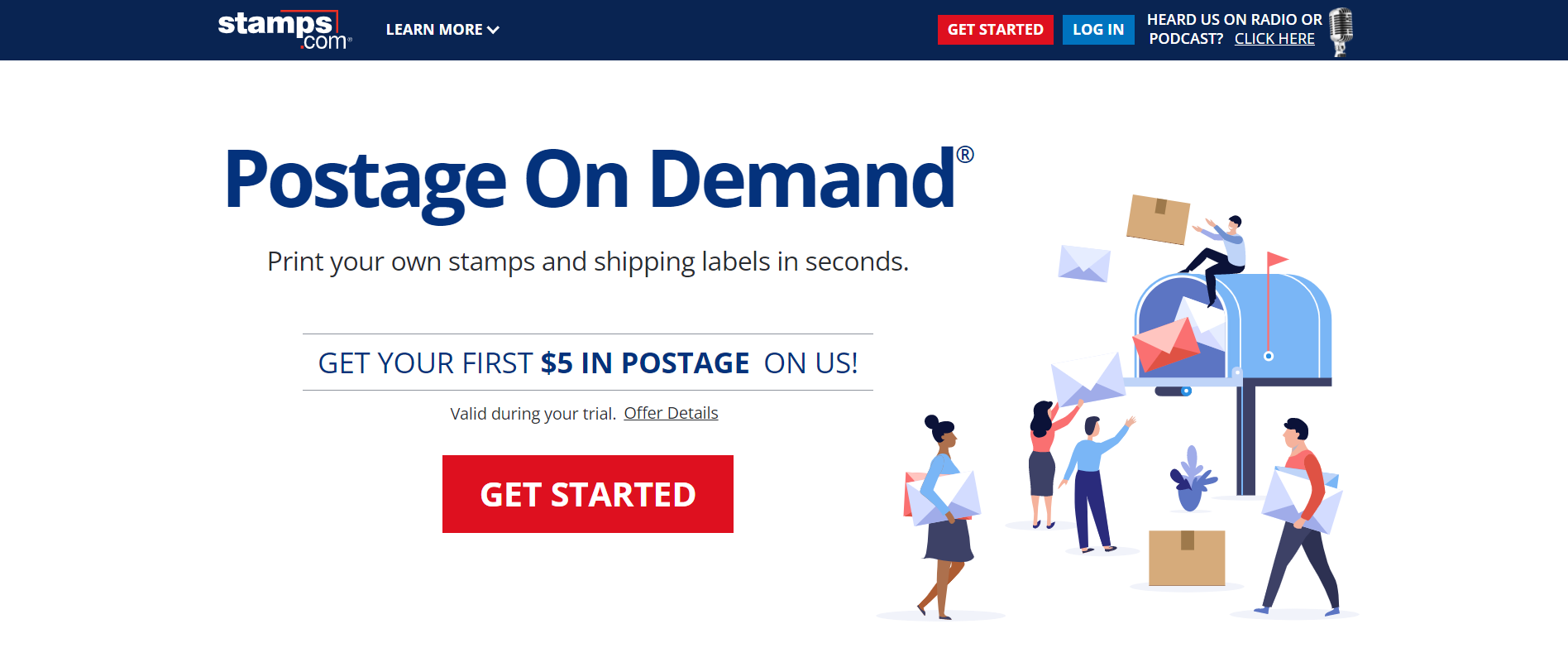- My Bottom Line Up Front
- Main Differences Between Easyship vs. ShipStation
- What Is Easyship?
- What Is ShipStation?
- The Main Features of Easyship
- The Main Features of ShipStation
- Easyship vs. ShipStation Support
- Easyship vs. ShipStation Pricing
- Easyship
- ShipStation
- Easyship vs. ShipStation - Pros and Cons
- Easyship
- Easyship vs. ShipStation Alternatives To Try
- FAQs
- To Sum Up …
Last Updated on April 22, 2023 by Ewen Finser
I know how painful it is to run an eCommerce store, especially regarding the logistics of shipping packages. So much can go wrong, and it’s hard to keep track of orders while keeping costs down.
Shipping services are vital for eCommerce businesses though, so if you’re running an eCommerce store, you will likely need one, and have come across the names of Easyship and Shipstation. The question is, which one suits your business better: Easyship or ShipStation?
Both Easyship and ShipStation are good platforms, in my opinion. They’ll unlock access to cheaper rates from specific carriers and make the day-to-day running of your business much smoother. Picking one is tough, so I’ve taken a look at each one, exploring their main features, and comparing them in terms of customer support, pricing, and more.
If you’re in a rush, though, check out the next section to think which one I think is best!
My Bottom Line Up Front
Although both are great, I’d have to go with ShipStation. It has some excellent features, including automation and in-depth analytics, that may make all the difference in making strategic shipping and warehouse decisions. However, Easyship does have some advantages, including the fact that it feels a bit nicer to navigate than ShipStation.
Main Differences Between Easyship vs. ShipStation
The main differences between Easyship vs ShipStation are:
- Easyship has a slightly nicer interface, whereas Shipstation’s interface is a little more cluttered
- Easyship has a free plan, whereas ShipStation doesn’t (it does have a free trial, however)
- Easyship has 4 pricing plans, whereas ShipStation has 6 pricing plans
- Easyship’s reporting is pretty simple, whereas ShipStation’s reporting is more in-depth
- Easyship offers special services for crowd funders, whereas ShipStation doesn’t
What Is Easyship?
Easyship is a shipping solution aimed at those running an eCommerce business. It partners with several couriers, allowing users to ship packages around the world. Easyship has automation tools to make some processes, including generating shipping labels and calculating taxes, much easier to understand.
I’d recommend Easyship for any-sized business, particularly if you want a platform that is easy to use.
What Is ShipStation?
ShipStation is a shipping service aimed at eCommerce businesses. It uses automation, a shipping costs calculation tool, and powerful analytics to simplify the shipping process.
I’d recommend ShipStation for any-sized businesses, but larger companies may find it suits them better than Easyship.
Ship with confidence knowing you’re getting savings of up to 88% off from top carriers like UPS, USPS, and DHL Express. Over 130,000 merchants save more money, print faster, and spend less time shipping with ShipStation.
The Main Features of Easyship
Let’s take a look at how Easyship works.
UX
I like the layout of Easyship. It’s clear and easy to navigate, and the dashboard clearly shows some key metrics (value of products shipped, total cost, total cost per shipment, and the number of shipments). Plus, I’d like to give a shout-out to their onboarding process. It’s super easy to get going, and connecting your eCommerce store is incredibly simple.
However, I should say that it’s not the most mobile-friendly platform. It’s way easier to use Easyship on a PC, so it’s worth keeping that in mind. There is an Easyship app, but it’s pretty basic in terms of features.
Shipping
Once you’ve connected your eCommerce platform, overseeing shipments is simple. You can also create new shipments:
There are several features offered by Easyship that make it much easier to deal with shipping. For example, you can customize your shipping preferences, automate courier selection, delivery preferences, package sizes, product values, and so on. This makes it much easier if you’re selling products in larger volumes and saves a ton of time entering this information manually.
These shipping rules are handy. For example, you can choose to add insurance automatically when sending packages overseas. You can view your active shipping rules on the right, and you can edit them at any time. Easyship automatically generates shipping labels for printing, invoices, and customs paperwork. Again, that saves a lot of time, making the day-to-day running of your business much easier.
They also offer a service called Easyship Collect. This is specifically designed for crowdfunding, and it allows you to provide shipping upgrades to your customers, making it much more attractive for backers to support you.
Branding
You can send branded emails to your customers, giving them delivery updates:
This is super easy to do, and you can add logos, add your brand colors, and add a custom note to thank your customers. You can also create a dedicated tracking page (again, with your branding), as well as add your logo and brand colors to packing slips. Again, I like how easy this is; it creates consistency for your customers.
Courier Integrations
There are several couriers to choose from, including the following:
- Flat Export
- DHL Express
- UPS
- USPS
- SF Express
- APC
- SkyPostal
- DHL eCommerce
- Asendia
- Sendle
They have negotiated some reasonable rates, offering up to 91% off some couriers.
eCommerce Platforms
You can connect to several eCommerce platforms, including:
- BigCommerce
- eBay
- Ecwid
- Magento
- Shopify
- Shopify Plus
- Shopmatic
- Squarespace
- Weebly
- Wix
- WooCommerce
- Zapier
They make the process of connecting to your eCommerce store as simple as it can be, which is great if you’re not particularly tech-savvy.
Taxes
One benefit of Easyship is that it makes it so easy to deal with duties and taxes. Unexpected costs are a pain, but you should be able to avoid these with Easyship. It automatically generates tax documents too, which is excellent. Plus, because taxes vary depending on the item you’re selling, you can choose a category that fits your product and it will calculate the tax for you depending on the country you plan to send it to.
This is easy to do if you sync Easyship with an eCommerce platform like Shopify, and it takes just moments to set up new products for Easyship to calculate the taxes required.
Global Selling
Global selling can be a bit of a headache but there are a few features on Easyship that make it slightly easier. For example, it offers discounted shipping rates and global warehouse storage. I like that it automatically updates your customers no matter where they are in the world. This is great for increasing customer satisfaction, as well as keeping track of your parcels as they jet off across the globe.
Analytics
I like the simple but useful analytics offered by Easyship:
You can run reports to share with team members and stakeholders, which is helpful in planning for future growth.
The Main Features of ShipStation
Now, let’s take a deeper look at ShipStation.
UX
I have to say, I don’t like ShipStation’s interface as much as Easyship’s. It’s easy to use, but it just doesn’t look as nice. That’s a personal thing: you might not feel that this is important to you. The actual onboarding process is pretty simple, and I like that you can easily find everything you need on the left-hand side of the screen.
Shipping
ShipStation makes shipping a lot easier. You’ll have access to all your orders at each stage of the process, and just like Easyship, you can automate certain processes. For example, you can choose shipping rules:
For example, you can decide that parcels leaving a particular warehouse must add a tag to the order, so you can see how many orders are coming from that warehouse. You can add as many rules as you want, which can help speed up specific processes.
You can view, sort, and filter orders, and edit imported orders at any time. You can split orders into multiple shipments, or combine them into single shipments. You can also set up customized alerts, so you can keep an eye on your orders.
I like how quick and easy it is to generate labels for online orders from different couriers. You can even batch-print labels. Plus, it’s easy to pass on the best shipping rates to your customers.
Branding
You can set up branding in ShipStation, making each stage of the process feel familiar to your customers. From branded landing pages to invoices and packing slips, to SMS notifications and return pages, each step of the journey can be customized with your logo and custom colors, as well as your social media links.
I like how easy this is to do, and it’s vital if you want your customers to get a sense of your brand. They also offer a real-time tracking page and automated emails to keep your customers updated at each stage of the shipping process. (This also skips the step of having to create custom emails with an email marketing service.)
Couriers
ShipStation partners with a wide range of couriers, including the following:
- USPS
- UPS
- FedEx
- DPD
- Stamps.com
They partner with a wide range of couriers across the world, too. So depending on where your business is based, you should be able to access a good range of couriers to choose from. They have access to discounted rates, up to 78% with some couriers.
eCommerce Platforms
You can link your ShipStation account to a wide range of eCommerce platforms, including the following:
- Amazon
- eBay
- Shopify
- Salesforce
- Squarespace
- Wix
- WooCommerce
- ZenCart
It’s straightforward to link your eCommerce account to ShipStation, which is great.
Taxes
ShipStation has a rate calculator which allows you to quickly configure rates depending on the country you’re shipping to, allowing you to compare prices between couriers:
I like how easy this is to do and that you can access it anytime. In addition, having a clear idea of costs makes accounting much easier (check out our guide to the best accounting software for more tips on this).
Analytics
The Insights section allows you to see the overall performance of your eCommerce store (including new orders, orders shipped, and orders unshipped). You can also track customer engagement, which I find to be useful. This shows you the open rate of emails sent by ShipStation (for example, dispatch notification emails).
Plus, you can run a vast range of reports on anything from country comparisons to overall shipping costs to low stock reports. Reporting is a crucial bonus of ShipStation, and it has the edge over Easyship in this regard.
Easyship vs. ShipStation Support
Hopefully, you won’t need support, but if something does go wrong, how can Easyship and ShipStation help?
Easyship
There are some excellent tutorials here, particularly around getting started on the platform and connecting stores and couriers. The knowledge base is valuable, and it’s easy to find articles on common troubleshooting problems. Easyship offers support via a ticketing system. They’re pretty fast and helpful when responding to queries. Those on a higher price plan also have access to live chat and phone support.
ShipStation
ShipStation’s knowledge base is pretty good, and it has a ton of tutorials on how to get started, including how to integrate with your eCommerce platform. You can access support via email or live chat (depending on your price tier), and the customer service team is friendly and quick to respond.
Easyship vs. ShipStation Pricing
How do they compare in terms of pricing?
Easyship
Easyship has 4 pricing plans:
Free – $0 per month
- 50 shipments per month
- 1 team member
- Unlimited eCommerce integrations
- Unlimited Crowdfunding integration
Plus – $29 per month
- 500 shipments per month
- 1 link to own courier account
- 3 team members
- Unlimited eCommerce integrations
- Unlimited Crowdfunding integration
- Live chat support
Premier – $69 per month
- 1500 shipments per month
- 2 links to own courier account
- 5 team members
- Unlimited eCommerce integrations
- Unlimited Crowdfunding integration
- Access to phone support
Enterprise – Price on request
You need to contact the customer service team to learn more about the Enterprise plan.
All plans have a 14-day free trial (or you can just sign up for their Free plan to begin with). You can find out more on their pricing page.
ShipStation
ShipStation has 6 price tiers:
Starter – $9.00 per month
- 50 shipments
- 1 user
- Email and community forum support
Bronze – $29 per month
- 500 shipments per month
- 1 user
- Email and community forum support
Silver – $49 per month
- 1500 shipments per month
- 2 users
- Live chat, email, and community forum support
Gold – $69 per month
- 3000 shipments per month
- 3 users
- Live chat, email, and community forum support
Platinum – $99 per month
- 6000 shipments per month
- 5 users
- Live chat, email, and community forum support
Enterprise – $159 per month
- Unlimited shipments
- 10 users
- Live chat, phone support, email, and community forum support
They offer a 14-day free trial so you can figure out if it suits you. You can find out more on their pricing page.
Ship with confidence knowing you’re getting savings of up to 88% off from top carriers like UPS, USPS, and DHL Express. Over 130,000 merchants save more money, print faster, and spend less time shipping with ShipStation.
Easyship vs. ShipStation – Pros and Cons
Here’s a quick overview of the best things about each service, as well as some elements that could be improved.
Easyship
Pros
- Large range of couriers with discounted rates
- Easy-to-use platform
- Good, simple analytics
- Easy to link eCommerce platform
- Good branding services
- Dedicated service for crowdfunders
Cons
- Not the most mobile-friendly platform
ShipStation
Pros
- Good discounted rates on several couriers
- Easy to link eCommerce platform
- In-depth analytics
- Good branding services
Cons
- The interface is a bit less user-friendly
Easyship vs. ShipStation Alternatives To Try
If you don’t like the look of either Easyship or ShipStation, here are some alternatives you could look at instead:
- Stamps.com: Stamps.com is a popular service aimed at making shipping much easier. It’s great for smaller businesses but only integrates with USPS, so the rates may not be as competitive. You can find out more in our Shippo vs. Stamps.com comparison.
- Shippo: Shippo is designed to make shipping easier and connects to various eCommerce platforms. It’s a user-friendly platform, and you can read more in our Shippo vs. EasyPost comparison.
- ShipRush: ShipRush is a service designed for small-to-medium-sized businesses. It integrates with a ton of eCommerce platforms. You can read more in our ShipRush vs. ShippingEasy comparison.
FAQs
Question: Does Easyship or ShipStation have a mobile app?
Answer: Easyship and ShipStation both have apps that allow you to manage orders on the go, available for Android and iOS.
Question: Can I easily cancel my subscription to Easyship and ShipStation?
Answer: Yes, on both platforms you can do this by going to the ‘accounts’ section.
Question: Does Easyship or ShipStation ship parcels themselves?
Answer: No, they don’t ship parcels themselves. Instead, they act as ‘middlemen’ between you and couriers, allowing you to get discounted rates.
To Sum Up …
I think that ShipStation has the edge today. I like the automation and the powerful tools, including the very in-depth reporting. This is vital if you want to make better decisions for your business. While I think the platform itself could be nicer to look at, this is really a minor setback compared to the features on offer.
You may prefer Easyship, however. It has some great features, feels nice to use, and some features designed for crowd-funders, which is excellent if that applies to your business.
Hopefully, this has helped you to find the best shipping service for your needs! Once you get going, a good shipping service will take away so much hassle when it comes to the logistics side of running an eCommerce store, so it’s definitely worth the process of signing up for one.















